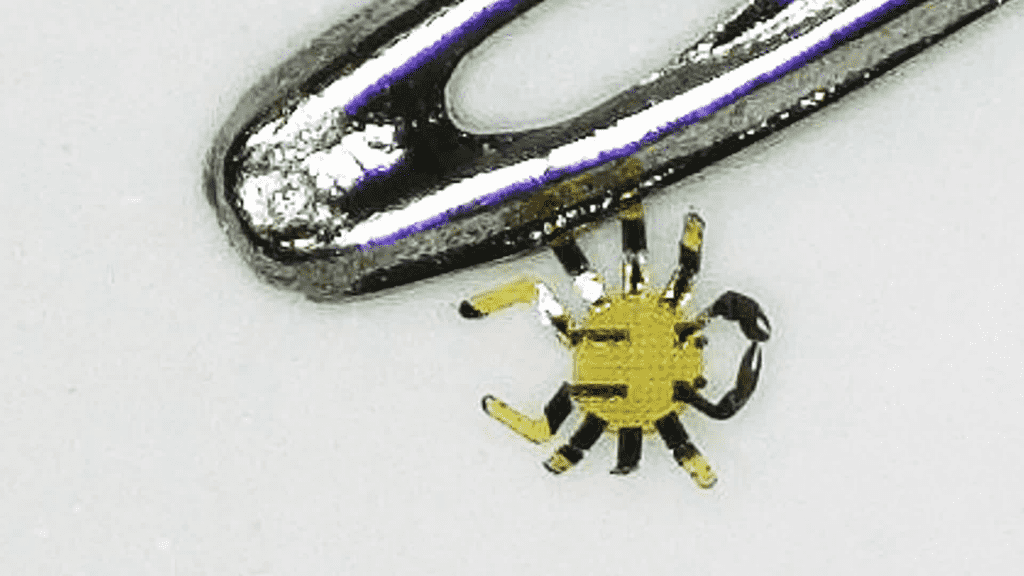Sometimes being small is not an undesirable thing. In just the same way, researchers at North-Western University have finally succeeded, after simulations of a year and a half, in building the world’s smallest robot, which can be controlled remotely. It has a width of just half a millimeter, which makes it even more difficult to grab with fingers. However, one of its specialties is that it can easily transform its shape, meaning that it is fabricated using “shape memory alloy materials.”
This tiny robot can do any of the actions such as bending, walking, jumping, twisting, etc. without the need to be controlled by hydraulics or electricity. Heat plays an important role in shaping these robots. When heat is given by a laser and is converged up to a specific point, their shape is deformed and can transform into our desired shape. Simultaneously, heating them again would bring these robots back into their previous shape.
Materials Science and Engineering Professor John A. Rogers said, “Robotics is an exciting field of research, and the development of microscale robots is a fun topic for academic exploration. You might imagine micro-robots as agents to repair or assemble small structures or machines in industry or as surgical assistants to clear clogged arteries, to stop internal bleeding or to eliminate cancerous tumors — all in minimally invasive procedures.”
These robots are being made into a “crab-like shape”. In the formulation phase, the team first put them together as flat structures, which were then combined with the stretched rubber substrate at the rock bottom of their feet. After this, the whole structure was stretched to a certain level, and when released, it was assembled into a three-dimensional structure. The whole process was done in a controlled environment and to make them sustain their shape, a proper glass coating was applied at each end of their joints.
It should be noted that the capacity for providing heat through a laser was already taken into consideration in the manufacturing process so that their shape can be transformed easily when needed. The capability of heating them through a laser not only encompasses their shape but also the direction in which they move. For example, if we heat them from the right, then they start moving in the right direction, and so on.

Coupled with this, these tiny robots have a lot of practical applications as they can be used in different surgical procedures in medicine. In the parts of the body where other devices are unable to reach, these little beasts can easily play their part and have the potential to assist physicians in this regard. Similarly, the loopholes in machines at the microscopic level can also be easily detected and resolved.
Source link

